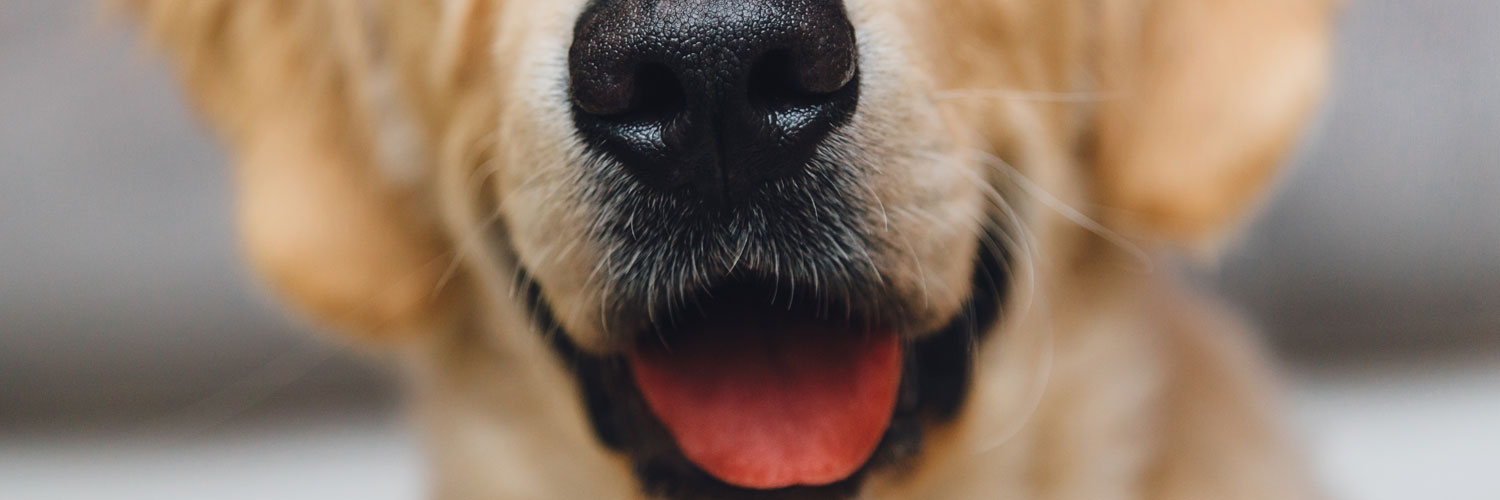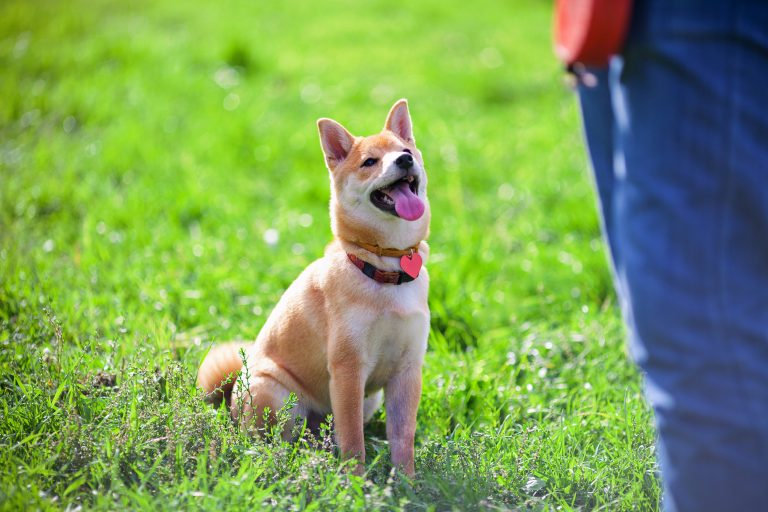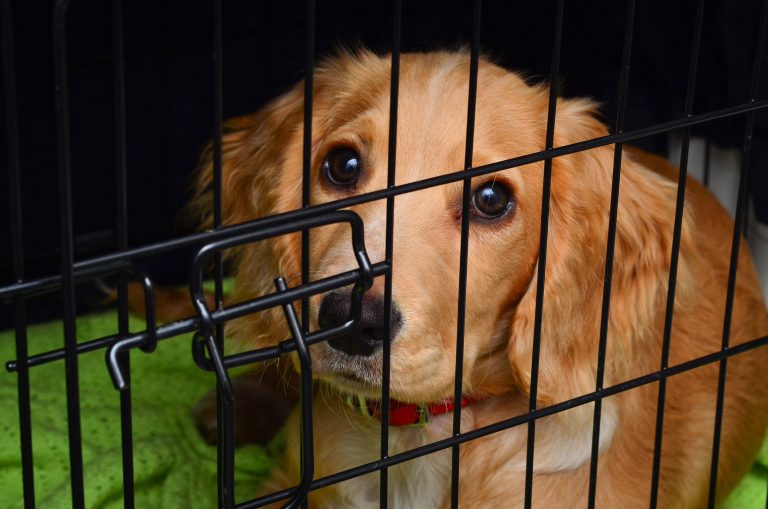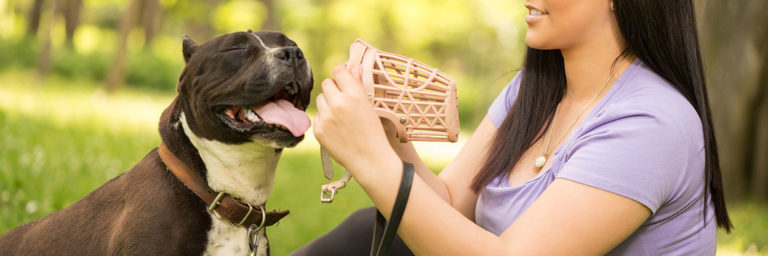How to Leash Train a Puppy

For many people, the sight of a dog owner being dragged along by his dog is a familiar one. Many dog owners struggle with teaching their dogs not to pull on the leash, often with little success. Teaching your dog to walk calmly on the leash can be a challenging task but, as with all things, there is a solution. The key is to start teaching your puppy proper leash etiquette from a young age so this kind of problem never develops. In this article you will receive instruction for leash training your puppy as well as tips for teaching older dogs to stop pulling on the leash.
Before You Begin
The first step in teaching your puppy proper leash etiquette is to find the right equipment – a collar and leash. Your puppy’s collar should fit him well and it should be loose enough that it doesn’t restrict his breathing but tight enough that it won’t easily slip over his head. You may need to adjust your puppy’s collar every few weeks as he grows and you will likely have to replace it entirely once he reaches 12 months of age. Your puppy’s leash should match his age as well. Leashes for puppies are typically narrow and light – they are also fairly short, just long enough for your puppy to walk a few steps ahead of you. As your puppy becomes leash trained you can purchase a longer leash to give him a little bit more freedom during your walks.
Once you have the right leash and collar you then need to get into the proper mindset for leash training. Until your puppy learns to calmly walk by your side on the leash you should consider every walk a training session. As is true with any type of puppy training, you should keep your training sessions short – about 10 to 15 minutes – so your puppy doesn’t get bored. You should also be aware that these short training sessions will not likely be enough to satisfy your puppy’s daily needs for exercise so you should plan to incorporate some play time to help your puppy work off the rest of his energy during the day. As many dog owners know, a tired puppy makes for a happy owner.
Method One: Walk and Reward
This method of leash training is designed to teach your puppy to walk by your side while he is on the leash. In order to utilize this method you’ll need a short leash and a lot of small treats. Start by having your dog sit at your left side then, while holding a few treats in your left hand, place your hand in front of your dog’s nose. Tell your dog “Let’s walk”, or another similar command, and take a few steps forward. As you walk, reward your puppy with a small treat after every few steps and be sure to praise him to walking along at your side. If your puppy starts to pull ahead or if he moves too far from your side, immediately stop walking. Call your puppy back to you and ask him to sit then praise him for doing so. Start walking again with your left hand in front of your puppy’s nose and continue rewarding him every few steps for walking calmly. After a week or so of this you can start keeping the treats in your pocket rather than your hand and carry your hand at your side as you walk. You will still need to reward your puppy every few steps for good behavior but you will no longer be actively leading him with your hand full of treats. Over time, you can increase the length of your walks as well as the number of steps between rewards. Eventually your puppy will have learned to walk calmly by your side without needing to be rewarded every few steps.
Method Two: Stop and Go
In order for you to be successful with this method, your dog should already have an understanding of a few basic commands, namely “Sit” and “Come.” You will begin by putting your puppy on the leash and then walking slowly in one direction. As soon as your puppy reaches the end of his leash and begins to pull, stop where you are and wait. When your puppy allows some slack to form in the leash – he may turn to look at you or simply stop pulling – give him the “come” command. Once your puppy is by your side, give him the “sit” command and reward him with a treat when he sits. Immediately after you reward your puppy, begin walking again. As you walk, pay close attention to your puppy – if he looks to you during the walk, praise and reward him with a small treat. If you are consistent in rewarding your puppy for giving you his attention, he will learn to stay near you and to pay attention during his time on the leash. This method will also teach your puppy that he receives a reward if he keeps moving but, if he pulls on the leash, the walk will stop. It may take time for your puppy to learn proper leash etiquette, but if you are consistent in using this method you will eventually be successful.
How to Handle Leash Pulling
If your puppy has already grown up and has developed a habit of pulling on the leash, you may need to utilize a different method than the two options explained above. To combat this behavior, you will need to use a very short leash that doesn’t give your dog much room to pull ahead of you. To teach your dog to stop pulling, you may need to use a combination of verbal praise and food rewards. Keep a number of small treats in your left hand and start walking with your dog on your left side. Every few steps, call your dog back to you using his name and give him a food reward along with verbal praise for responding appropriately. After a few repetitions of this, your dog will start to expect the rewards and will pay more attention to you during the walk – he may also start to walk closer to you and will not pull as much on the leash. With enough repetition, your dog will learn to walk calmly by your side.
If you are having difficulty with this method, or if your dog is particularly stubborn in pulling on the leash, you may need to try some other things. In some cases, responding to your dog’s pulling on the leash by stopping entirely may not be effective – your dog may simply pull harder. If this is the case, rather than just stopping your forward progress, turn around and walk back the way you came. If your dog is pulling toward a particular object, walk in the opposite direction of that object. Do not pull on the leash or speak to your dog, and do not wait for him to follow – you are trying to teach your dog to pay attention to you and to stay by your side. Simply hold the leash firmly in your hand and walk in the opposite direction so that your dog is forced to follow. When your dog catches up with you, praise and reward him for good behavior. Enough repetitions of this sequence will teach your dog to pay attention to you while he is on the leash.
Some dogs simply do not respond well to any type of leash training. In cases like this, you may need to switch to a head halter or some type of harness that gives you more control over your dog’s movements. If you have control of your dog’s head, you have control of his body. This will be helpful if you utilize the second method of leash training – the stop and go method. When you stop walking your dog may take a few more steps but as the leash tightens, his head will be drawn back toward you – that is when you give the “sit” command and wait for him to respond.
As is true with all types of dog training, if you are firm and consistent in your leash training methods, you will eventually be successful. You will undoubtedly occur some bumps along the way, but that is just part of being a dog owner. With time and patience you can teach your puppy to walk calmly on a leash, thus making your walks a more enjoyable experience for the both of you.





